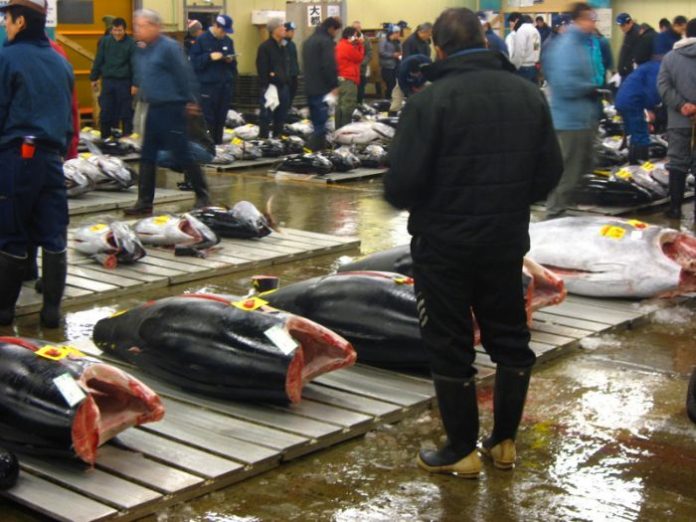Tsukiji market sushi
Take a tour of Tokyo’s famous fish market and sample the freshest sushi.
Five o’clock in the morning along the Tokyo waterfront and the Tsukiji Fish market is already at fever pitch, workers whisking seafood around in wooden handcars and electrified ta-rays that look like futuristic golf carts. The market’s inner sanctum is a warehouse where the world’s best tuna is auctioned each morning to professional buyers under contract to the leading fishmongers and restaurants around Tokyo.
A label on each fish identifies its point of origin-Somalia, Tahiti, Ireland. The action is frenzied, the auctioneer standing on a wooden box as the buyers shout their bids. Many of the tuna wind up in Tsukiji’s warren of 1,500 stalls, where around 450 types of seafood are sold on any given day, including the ingredients that go into Tokyo’s prized sushi.
Most of the stalls have been family run since 1920s, when Tsukiji was established, and many of them specialize in a particular type of seafood-tako (octopus), ika (squid), unagi (freshwater eel), hamachi (yellowtail tuna), and so on. Sushi was originally created as a way to preserve seafood in salt and rice in the era before refrigeration, and there are now hundreds of types ranging from ancient narezushi (salted, fermented fish layered with rice and left for six months before eating) to modern forms like the California roll that includes avocado and imitation crabmeat.
Wasabi and other Condiments
Sashimi and sushi comprise many of the same seafood. But while sashimi is generally eaten solo, sushi is always bundled together with a bite sized portion of white rice. They also share several popular condiments, including soysauce, wasabi (mustard), and gari (picked ginger). Although purists declare that wasabi and soy sauce should never be mixed prior to their arrival in your mouth, even in Japan it is common to blend them into a dipping sauce that dilutes the fiery green mustard.
Wasabi is made from the thick roots of leafy green plant called wasabia japonica. In olden days, a sharkskin grater was used to produce the flakes that were ground into mustard paste.
Although wasabi complements the taste of sushi and sashimi, it may also contain compounds that kill the microbes and parasites found in raw fish. Indigenous to the Japanese archipelago, wasabi once flourished along mountain streams, but is nowadays more commonly farmed. Demand is such that Japan must now import wasabi from China, Taiwan, and even as far away as New Zealand.
When to Go: There is no particular season for sushi in Japan, and Tsukiji Fish Market is open year-round. Tuna auctions take place 5:30-7 am; the market winds down by early afternoon.
Planning: Sushi is available in eateries around the edge of Tsukiji, and even at the crack of dawn the locals would not consider eating it without a bottle of Japanese beer or potent sake. One of the more authentic market cafes is Ryuzushi, where patrons sit along the bar while the chef makes the sushi in front of them. Three hours is plenty of time to witness the tuna action, wander through the market, and grab a bite to eat. The busy streets around the market are lined with shops and stalls culinary accessories, including sushi and sashimi dishes, soy-sauce holders, wooden cutting boards, chopsticks, and wonderful hand-crafted knives.
Websites: www.jnto.go.jp, www.tsukiji-market.or.jp/tukiji_e.htm




















